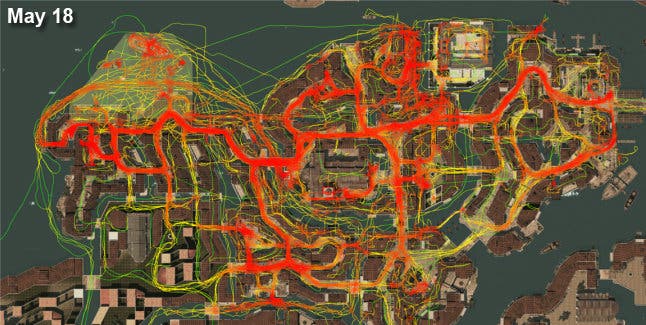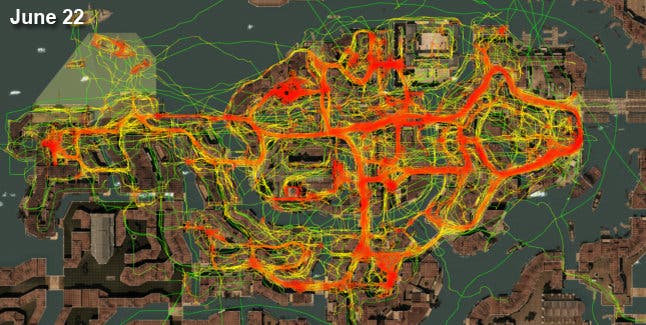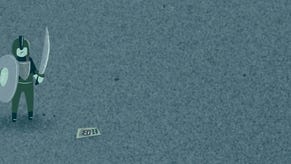Designing Assassin's Creed II
230 new features, 200 design documents, 300 staff, no time for revisions. How did Ubisoft Montreal deliver?
Five designers produced over 200 documents in creating Assassin's Creed II, and the process worked to such a degree that out of the 230 features devised, only one of them - the Notoriety system - received a second revision. The to-the-point nature of the documents, combined with their sheer depth, also meant they could be used by the testers in the QA department.
"Their testing was all based on our design documents. If the line didn't work, they'd file a bug and that's it," Plourde says. "It was really useful in production because when I said we had a team of 300 in production, I didn't include the testers. They were in Romania!"
So the basic design work in Assassin's Creed II was strong enough and flexible enough to ensure that the features didn't require wholesale changes or second revisions. But this is not to say that the team did not work intensely on refining the game using that versatile framework. Playtest was an enormous benefit in this respect.
"ACII production meant we had zero time for polish. I'm serious when I say we had zero time to polish the game," emphasises Plourde.
"We made the gamble where playtest would be the main tool for identifying problematic areas in the walkthrough and would actually be the tool that would make sure that our game is polished. It was going to be playtest that would flag every issue we had in the game and if we solved those issues, we would have a really polished game."


Reams of data would emerge from the playtests that the team used to tweak the balance of the game. How long it took for players to complete missions, where the player died - quantitative data along those lines was instrumental in discerning where gamers weren't having fun.
"Sometimes you'd say to a mission designer that this map is too hard and he'd say 'You're full of shit! You suck!' By having concrete data, showing that the player died 15 times in this mission, it's not about two people's taste, it's about what happened in the game," Plourde shares.
The second important conclusion from the playtest is more qualitative in nature, an appreciation report if you will.
"This context data is the most important. If somebody says that a feature is super-fun but it's not exactly what I had in mind about that feature, I don't care. It helps provide perspective to your work," reasons Plourde.
"Knowing what happened and what the players had in mind when that happened, that helps you make decisions that make sense. You need to adapt those playtests and what's going to happen in them based on your production cycle."
The two major stages in production are pre-alpha, where the feature being built is put to the test to validate whether it's working as intended, or not. Post-alpha, the feature itself is locked and the objective is to make the experience as smooth and as fun as possible.
Going back to the core gameplay pillars, the navigation system was one of the key elements put through playtest to make sure it worked and that it was as much fun as it could be.
"Our buildings went from one or two storeys high in AC1 to three to four in Venice," Patrick explains. "The thing is because we wanted to have more distinction between every city, the problem was that climbing felt very slow and the player didn't use free-running as much as we would like in the game."
The team were faced with the prospect of one of the core improvements to the game simply not working to the degree that they wanted it to. Re-mapping the layout was a production step too far and would have worked to the detriment of what the designers wanted to achieve with one of ACII's core improvements.
To gauge the effectiveness of the navigation, the team created overhead heatmaps of the environment to show how much of the layout is being used in gameplay. As Plourde says, more navigation means more fun.


"We have two players in the same playtest in the same mission, sitting next to each other, breathing the same air, eating the same food at lunch and player 12 found the mission boring while player 13 found the mission fun," says Plourde.
"You can really see in their behaviour that one player really maximised the navigation and found one route, while the other one fooled around a bit more in the city and it affected how they perceived the same mission."
The heatmaps proved to be enlightening. They showed that on the one hand one of the players was investing every nook and cranny, and thus maximising the return on the investment in the artwork.
"But at the same time I was looking at it again and panicking because 'Arrghhh! Nobody uses the rooftops!' There are rooftops with two hours of gameplay and nobody was visiting them at all. We had already said that more navigation was more fun, but they're not using the rooftops except where the mission required it. In that case, in mission 10 of Sequence 7, it was rated the most fun mission by players. So it proved that more navigation equals more fun in Assassin's Creed."
















